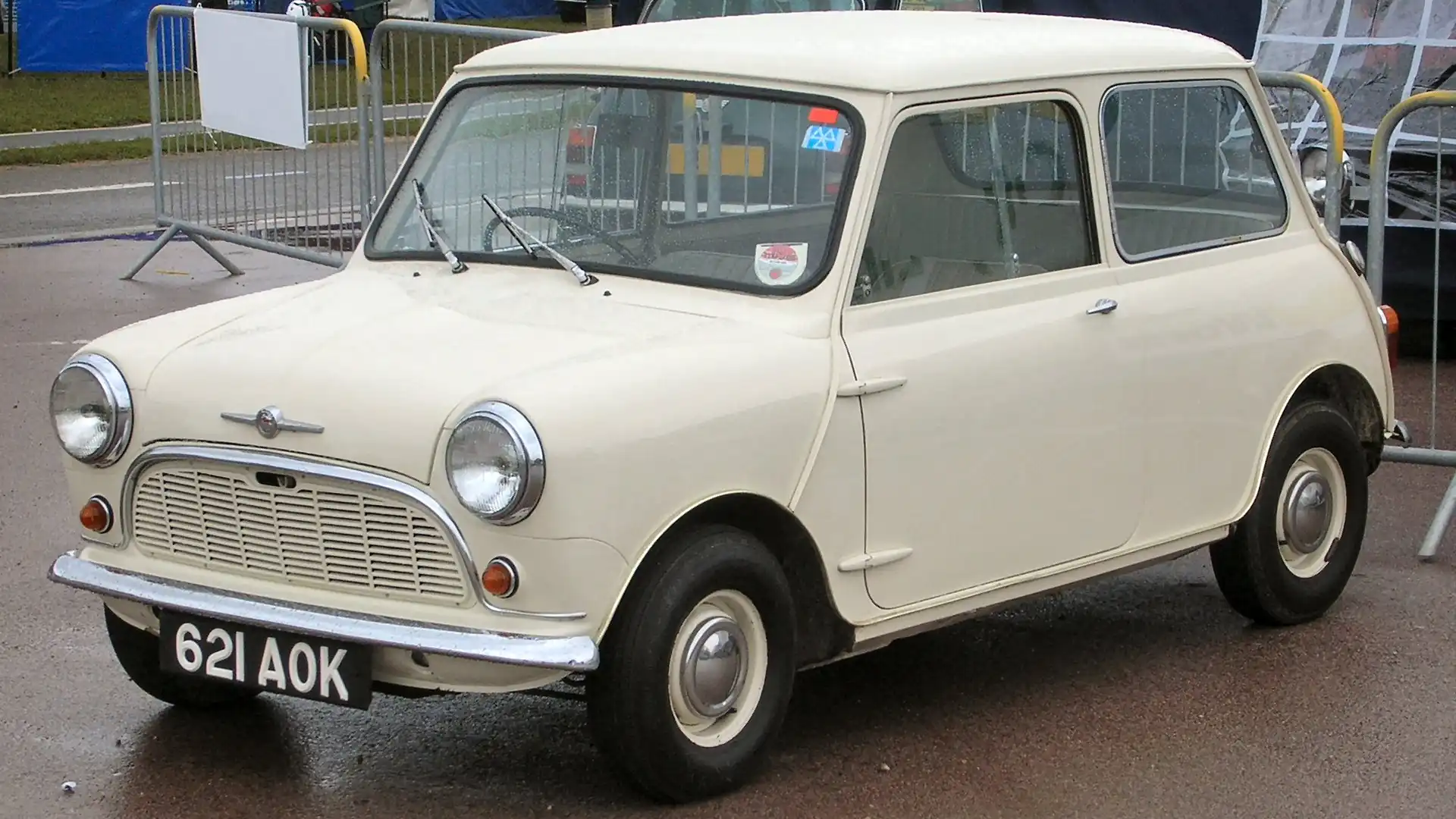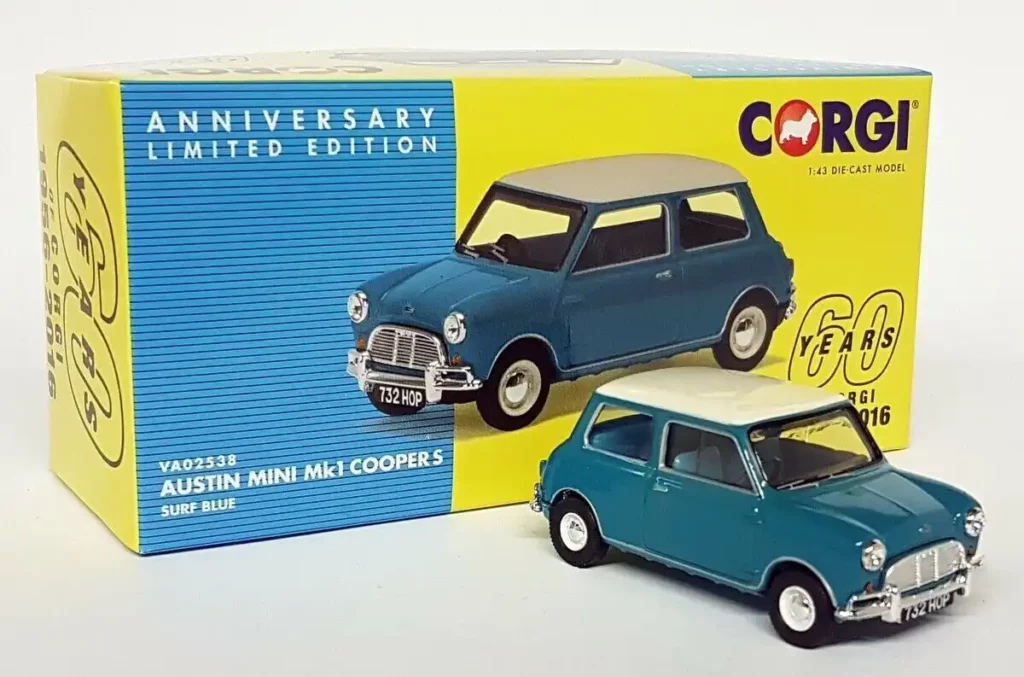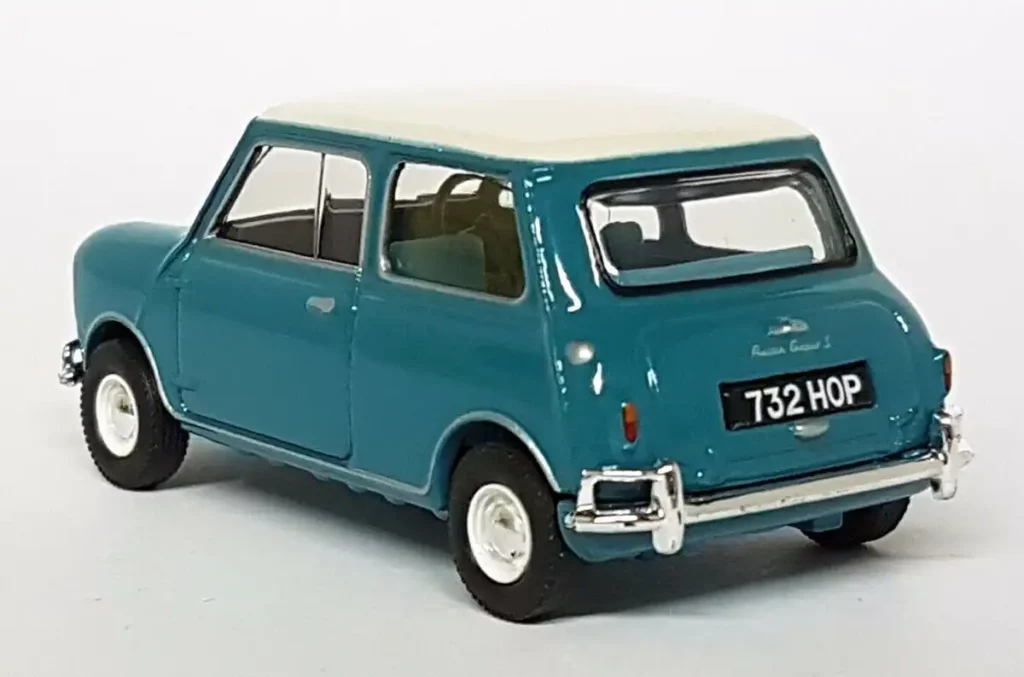Mini Cooper – The History
Author: João Bosco Gageiro Ferreira – jbosco1958@yahoo.com.br
Translation: Alisson Barros
The Mini is proof that the British know how to make good cars when they need to make good cars. Its birth has to do with the oil crisis that hit Europe in 1956: Leonard Lord, head of the British Motor Company, wanted an alternative to the economical and cheap German minicars that invaded the British market at the time – like the BMW Isetta.
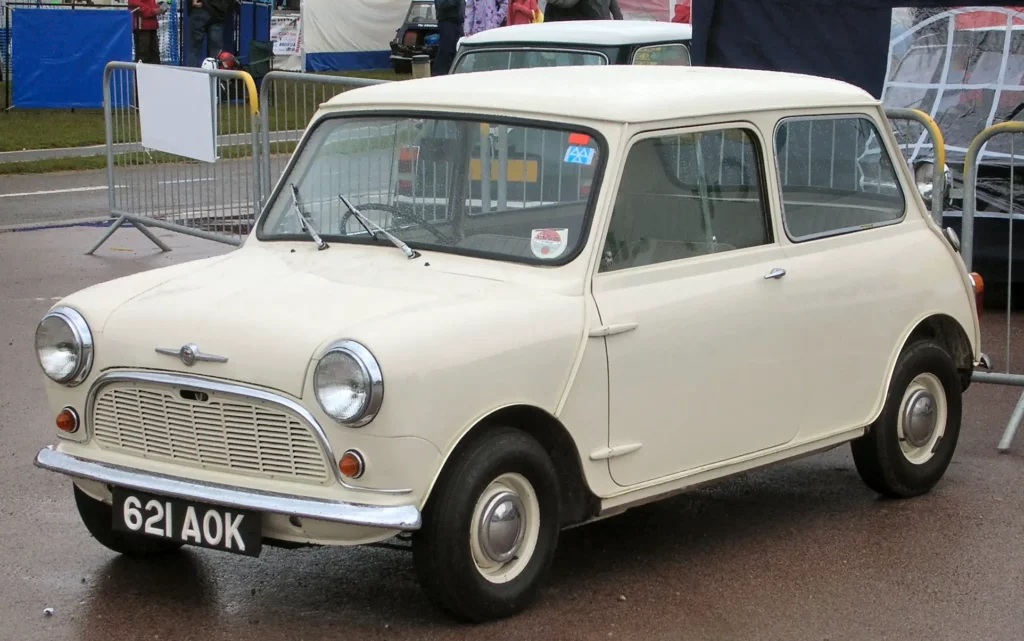
Photo: DeFacto, CC BY-SA 2.5, via Wikimedia Commons
Lord wanted to make a minicar that was a real car, not a motorcycle with a body – the so-called “cyclecars”, which paid less tax but only had three wheels. So, in late 1956, he hired designer Alec Issigonis and gave him a small engineering team to run the project as quickly as possible.
In 1957, the first prototypes were ready and in 1959 the Mini began to be produced.
The small two-volume sedan (the trunk lid did not give access to the interior of the car, so the original Mini was not a hatchback) had the same 848 cm³ four-cylinder used in other BMC models. However, instead of being mounted longitudinally as was standard at the time, the engine was mounted transversely. Just below it was the transmission, also on the transverse.
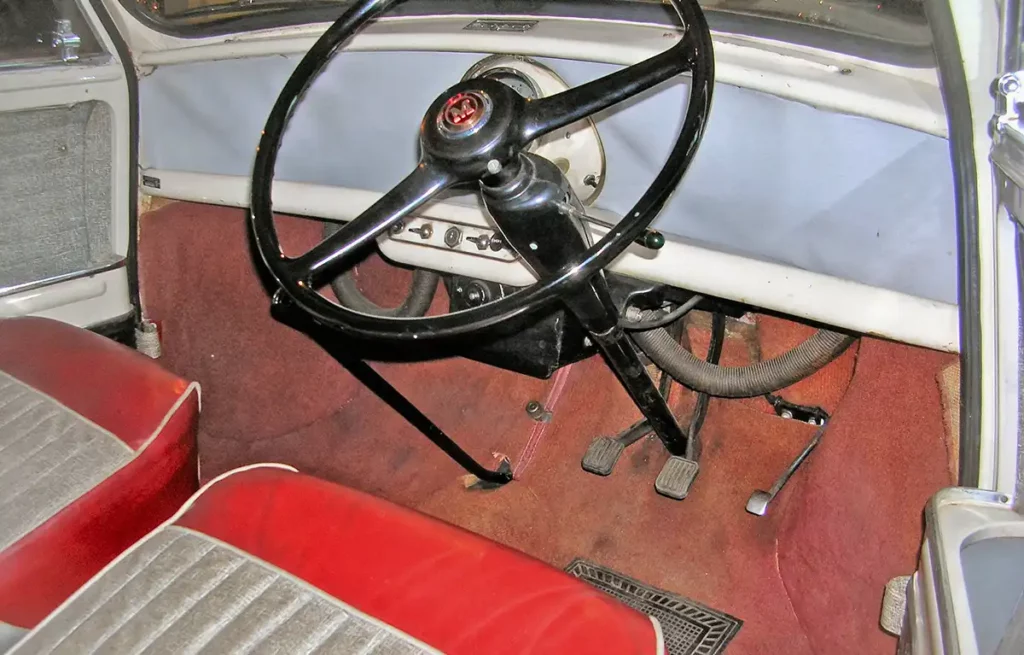
Photo: DeFacto, CC BY-SA 2.5, via Wikimedia Commons
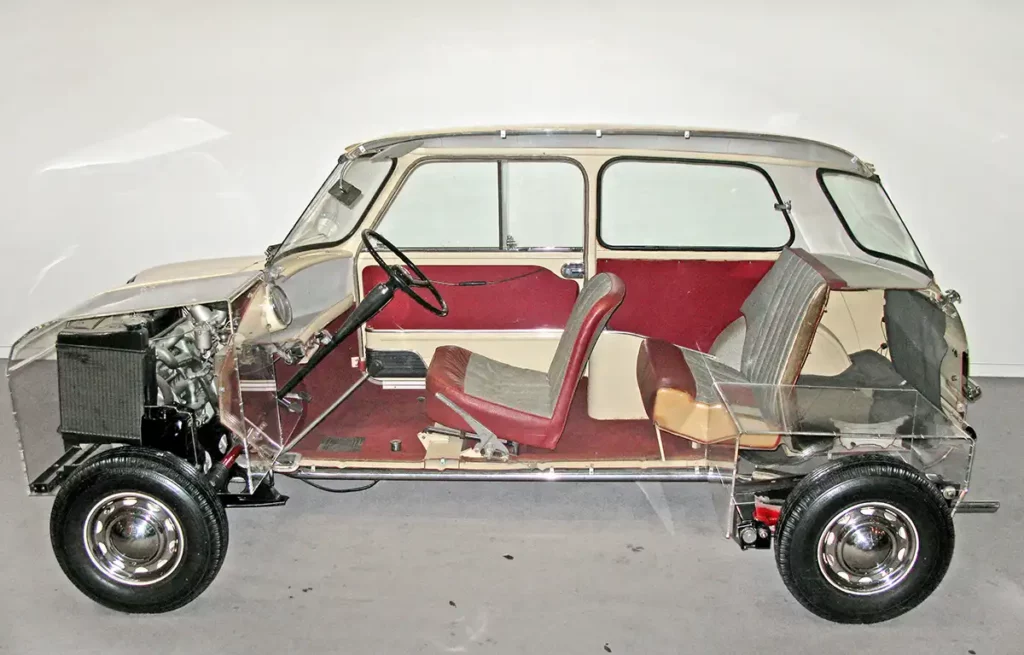
Photo: geni, CC BY-SA 4.0, via Wikimedia Commons
The arrangement saved space when accommodating the mechanical assembly to the structure, allowing much more space to be used for passengers and their luggage. In addition, this assembly eliminated the loss of power through the transmission that occurs when adopting a longitudinal engine at the front.
Proving the efficiency of the layout, other manufacturers also made their cars with a transverse engine and front-wheel drive. And to this day this is the standard arrangement in small cars.
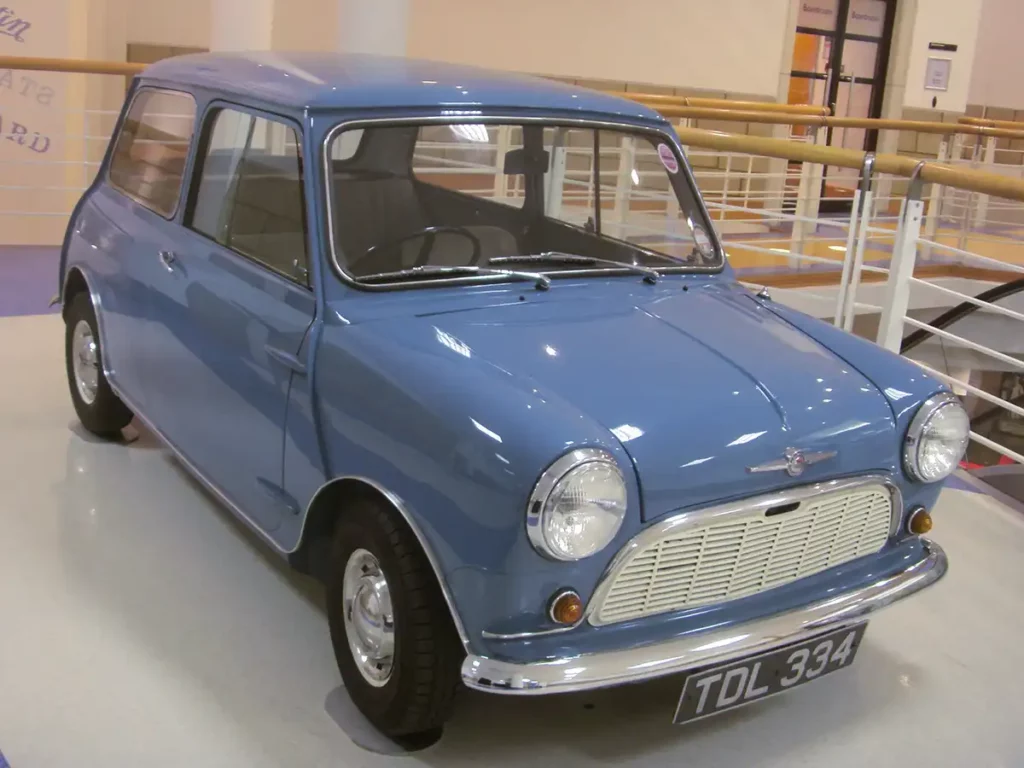
Photo: Mark Brown from Hampton, New Brunswick, Canada, CC BY-SA 2.0, via Wikimedia Commons
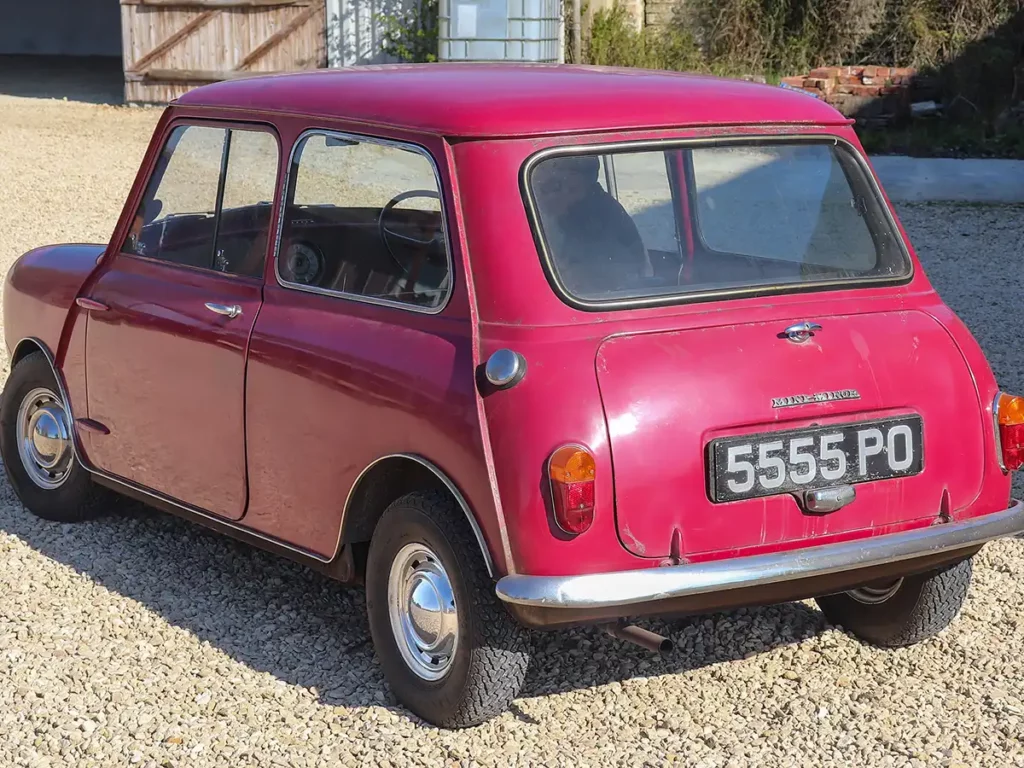
Photo: Vauxford, CC BY-SA 4.0, via Wikimedia Commons
Typically British, the Mini wasn’t exactly powerful or fast, but it was good to drive. The recipe is well known: wheels at the ends, short wheelbase, low weight (only 620 kg in the first models) and rigid suspension (with rubber cones instead of conventional springs), guaranteeing agility and precision in the curves.
It was no wonder that, in 1961, John Cooper saw potential in the Mini as a competition car. Cooper owned the Formula 1 team that bore his last name and owned the Cooper Car Company, where he manufactured racing cars for other categories. Upon meeting the Mini Cooper and driving it, he saw that it could revolutionize English motorsport.
As he was friends with Alec Issigonis, the Mini’s designer, Cooper talked about the idea of using the Mini for competitions. Issigonis initially failed to see the Mini’s potential for competition. After Cooper talked to BMC management, they convinced Issigonis to work with Cooper on a sports version of the Mini.
The Mini Cooper 997 was born there, with exclusive decoration and a one-liter engine (997 cm³) with a power of 55 hp – 21 hp more than the original.
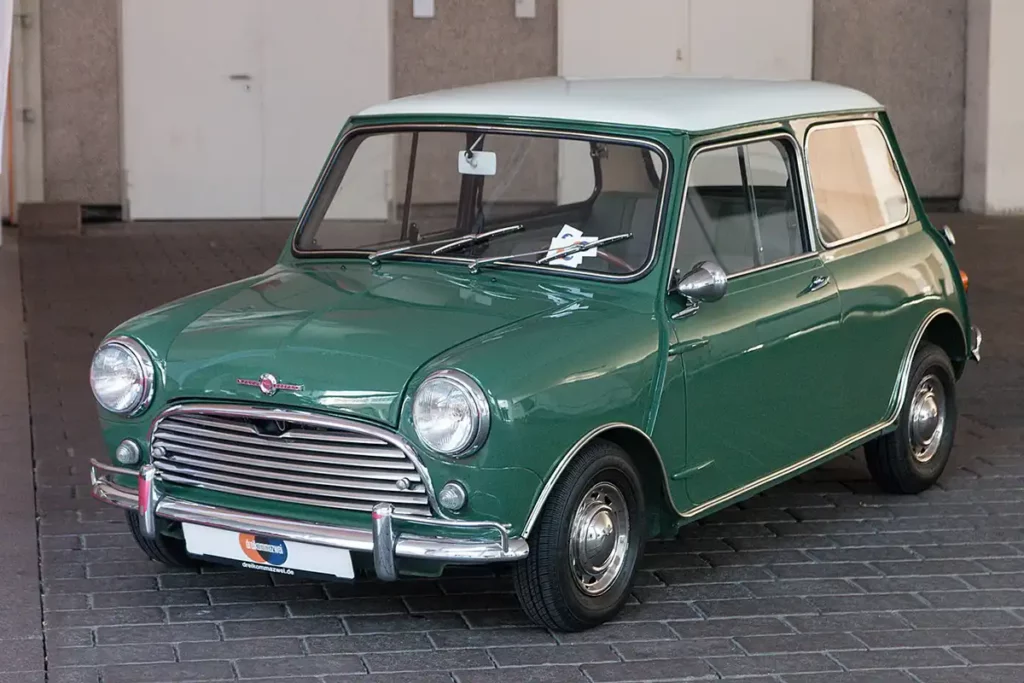
Photo: Johannes Maximilian, CC BY-SA 4.0, via Wikimedia Commons
In addition to being loved for as a street car, the Mini Cooper also became an icon of motorsport in the 1960s: its driveability compensated for its raw performance, and guaranteed it victories in three editions of the Monte Carlo Rally in 1964, 1965 and 1967. And it just didn’t win in 1966 because it was disqualified for using lamps in the headlights other than those specified by the regulation. It was a controversial decision, but it was the one that determined the disqualification. The Mini also won dozens of races on the British touring car circuit.
The success of the Minis modified by John Cooper was such that the two factories realized that buyers arrived at dealerships asking for the Mini Cooper, and not the Mini Austin and Mini Rover. From then on, they began to increase the engine power.
Winners of the Monte Carlo Rally in 1964, 1965 and 1967

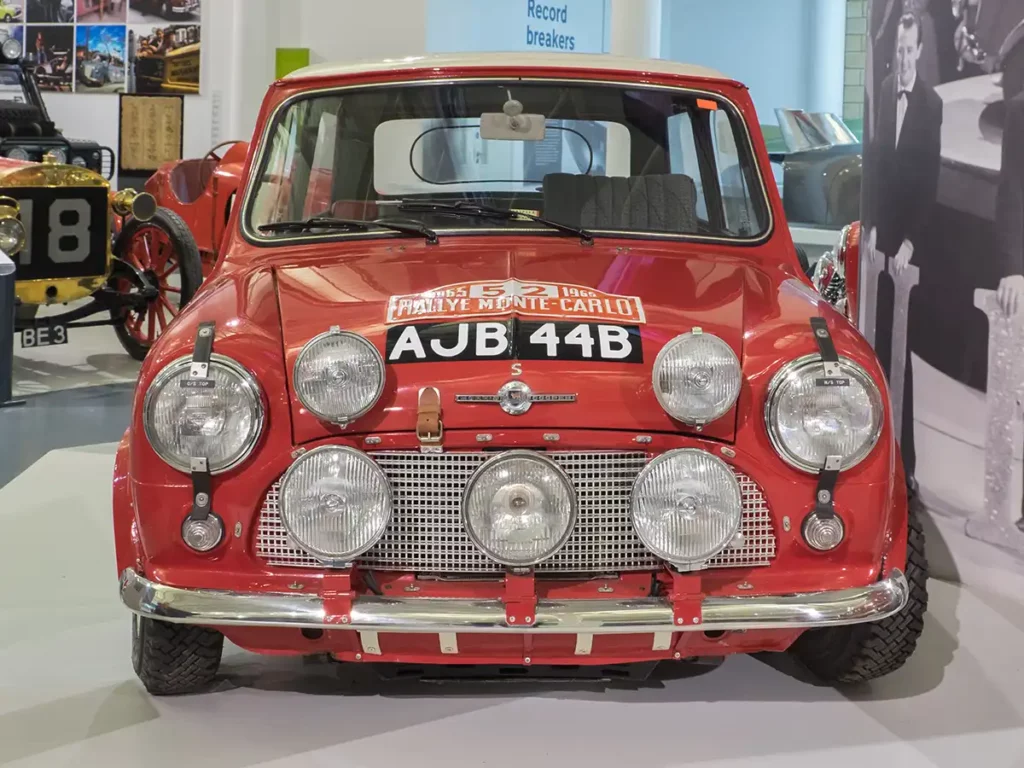

Another proof that the Mini was a great car was its longevity: with no major changes to it (aside from a more drastic styling change in 1969), the Mini was produced from 1959 to 2000, which is exactly 41 years. At the end of its life, the Mini had a 1.3 liter engine and 63 hp, with a four-speed gearbox.
At that point, the British Motor Company had already belonged to BMW since 1994. The Bavarian manufacturer sold a good part of the company, but kept the rights to the Mini name. And, already in 2000, it presented the concept that would give rise to the first generation of the modern Mini, released in 2001.
Although it was still small, the new Mini was considerably larger than the classic model, which for many people was reason enough to “disinherit” it from the Mini family. It is still produced in the UK, but the fact that it was developed by Germans prevents hardcore fans from considering it a legitimate successor to the English icon.
The original Mini is, in some respects, considered the British equivalent of its German contemporary, the Beetle, which enjoyed similar popularity in North America. In 1999, the Mini was voted the second most influential car of the 20th century, behind only the Ford Model T.
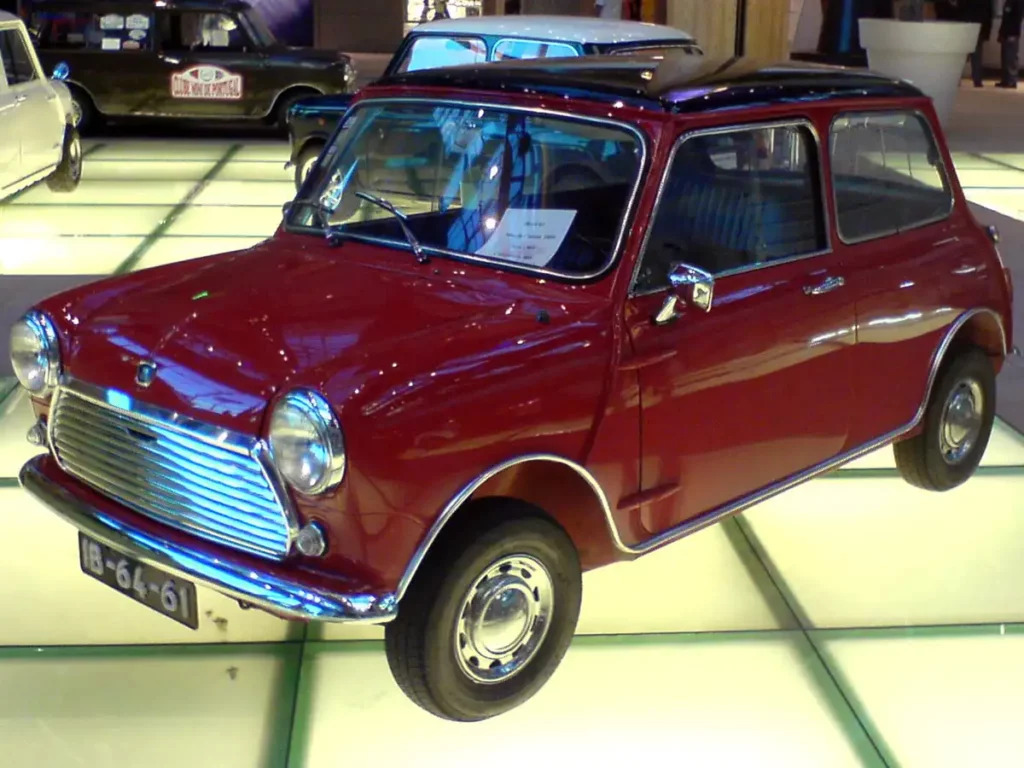
Photo: Lokal_Profil, CC BY-SA 2.5, via Wikimedia Commons

Photo: Riley from Christchurch, New Zealand, CC BY 2.0, via Wikimedia Commons
John Newton Cooper, CBE
(Surbiton, 17/07/1923 — Worthing, 24/12/2000)
A British engineer and designer, Cooper was one of the great names of the beginning of Formula 1, having revolutionized the category when he designed and built the revolutionary Formula 3 car Cooper 500, the first formula car with a central-rear longitudinal engine, which would transform the form to build the racing cars. The revolutionary car would bear fruit for John in the top category with his own team, the Cooper Car Company, which he had founded in 1946 with his father, Charles Cooper. The team, which would feature one of the greatest designers in the history of the championship, Owen Maddock, won four titles in the main categories using the mid-rear engine, in the 1959 and 1960 seasons, with the legendary Jack Brabham winning the drivers championship in both seasons.
I’ve included a brief biography of him to explain not only how the name Mini Cooper came about, but also to show why he is responsible for introducing the Mini Cooper in racing competitions.

Photo: © Keld Gydum CC BY-SA 2.5 DK, via Wikimedia Commons
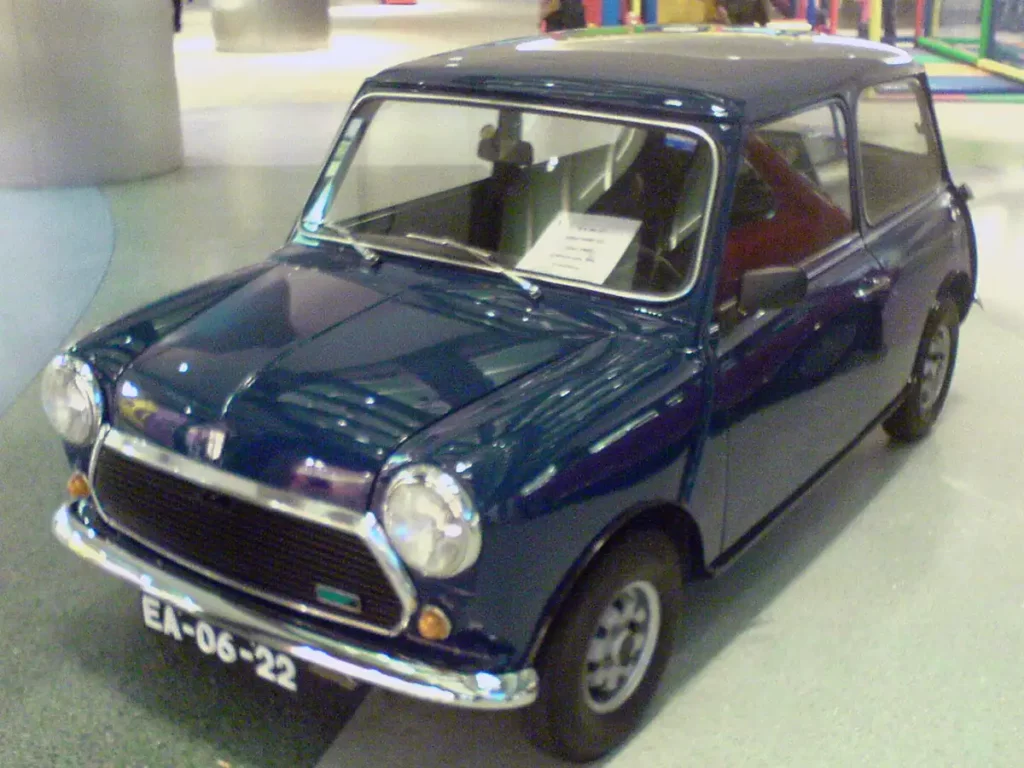
Photo: Lokal_Profil, CC BY-SA 2.5, via Wikimedia Commons
Mini in Motorsport
Its traction capacity as well as unrivaled handling allowed the Mini to impose itself among the most powerful and largest cars in the most important world events. In 1964 Irishman Paddy Hopkirk won the Monte Carlo Rally in a Mini Cooper. This feat was repeated by two more Finnish drivers Timo Makinen and Rauno Aaltonen in 1965 and 1967 respectively.
And it would have been four straight victories, had it not been for the controversial decision to eliminate the British teams BMC, Ford and Hillman from the race in 1966 due to the use of lamps in the headlights different from those used in street models, which they said was one of the requirements in the regulation. .
Three Mini Coopers crossed the finish line in 1st, 2nd, and 3rd, driven by Timo Mäkinen, Rauno Aaltonen and Paddy Hopkirk, respectively. Six other drivers were also disqualified, including Rosemary Smith, who had finished first in the Coupe des Dames, driving a Hilmann Imp.
So the British Mini Cooper wasn’t just a 1960s icon as a road car; it also dominated the highly prestigious Monte Carlo Rally.
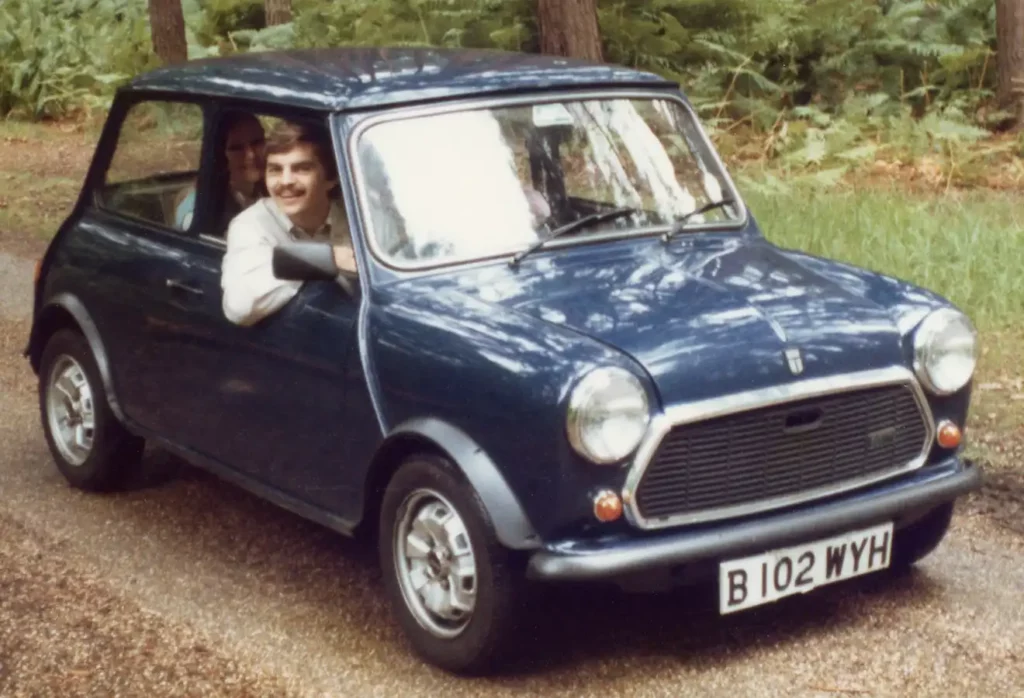
Photo: Rick Dikeman, CC BY-SA 3.0, via Wikimedia Common

Photo: Lokal_Profil, CC BY-SA 2.5, via Wikimedia Commons
The British complained, noting that their lights were the same as those used on previous races and because they thought it was just a way to elevate a French car to victory. But the protests by BMC and Ford, which eventually rose to the top of the FIA, had no effect.
There were subsequent talks of a British boycott and even an end to the event, though neither came to pass – as noted, Mini was back to win the following year. However, the Monte Carlo Rally’s reputation was damaged.
A few years later, Bill Boddy spoke of the “displeasure” of the case and opined that for the event “much of the former prestige has diminished”, while Doug Nye described the disqualifications as an “utterly disgraceful scandal”.
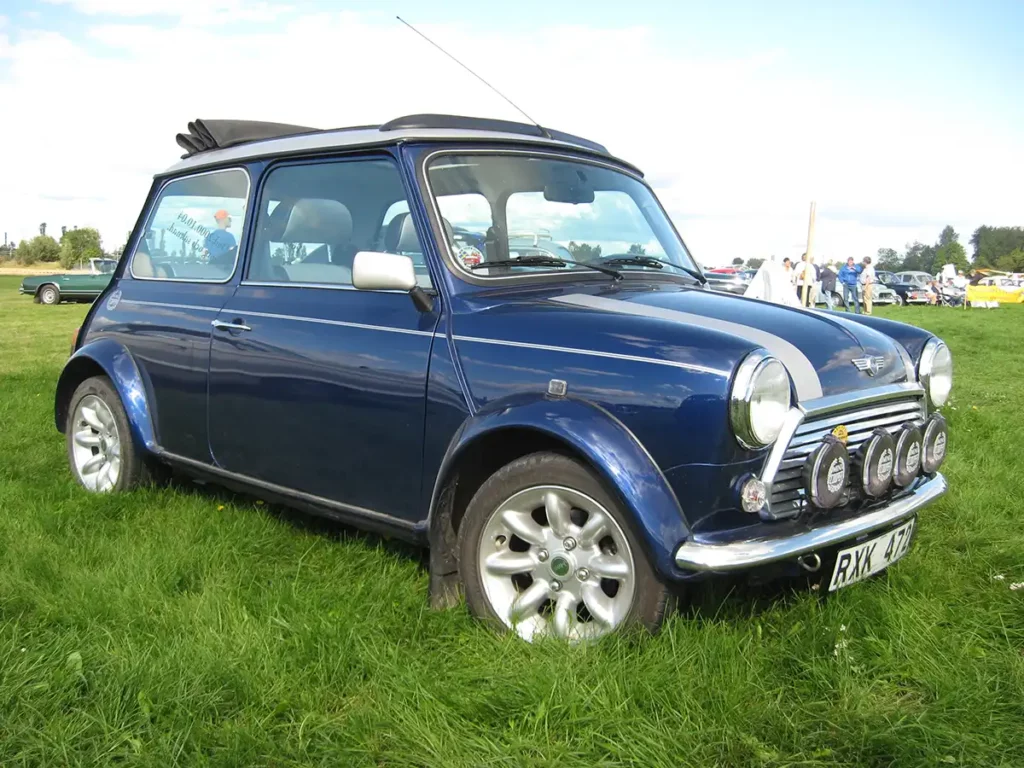
Photo: Liftarn, CC BY 3.0, via Wikimedia Commons
Fun facts about the Mini Cooper
In the history of the Mini, the last unit of the English generation to leave the factory was long after its production was stopped. In 2012, a 1975 Mini Clubman was found in pieces inside the underground tunnels of the Longbridge plant. This tunnel was used by employees to get around. The car was auctioned and sold for £1,400.
The English Mini was very successful in Japan. In the 90s, the E.R.A. Mini Turbo was the most coveted in the country, being considered a retro icon.
John Cooper, the legendary mechanic who prepared the Mini for racing, in addition to putting England in the history of Formula 1, passed away in the same year that the original Mini stopped being manufactured, in 2000.
The English comedian Rowan Atkinson, with his well-known character Mr. Bean, drew laughter from many people with his yellow Mini from 1976. A classic scene is the one in which the clumsy character loads the car with so much junk, that he has to steer it sitting in an armchair on the roof, guiding it with a rope and a broom.
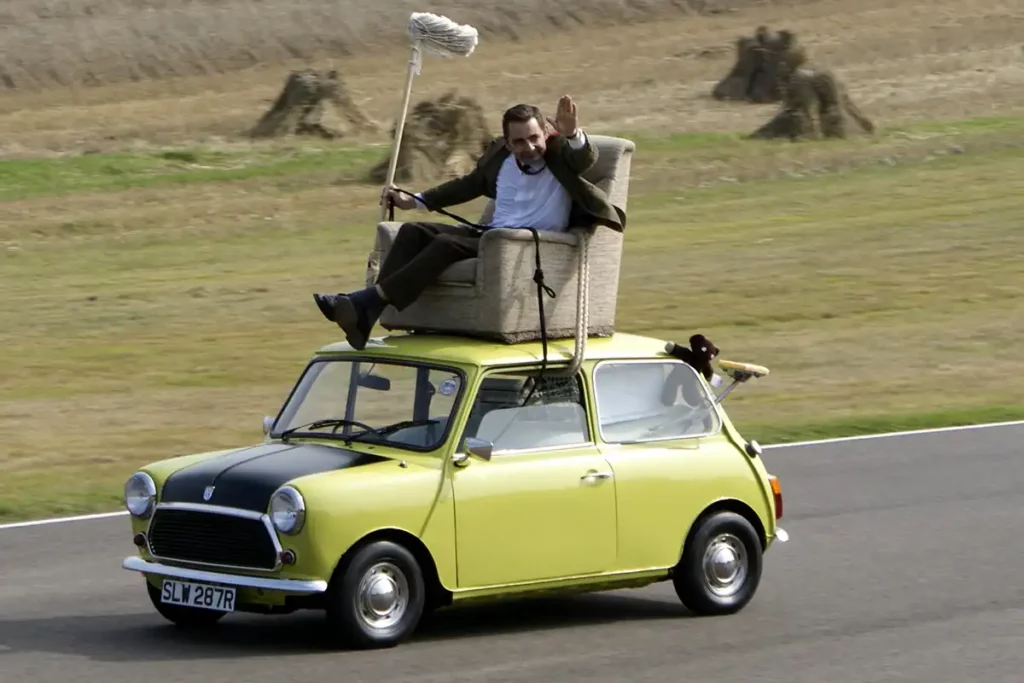
Photo: Nathan Wong, CC BY 2.0, via Wikimedia Commons
Diecast Miniatures
Austin Mini Mk1 Cooper S 1962 – Corgi
This miniature was released in the Vanguards series by Corgi in celebration of the company’s 60th anniversary. Made in 1/43 scale, it was limited to 5,000 units.
Photos: GotModels-shop
Austin Mini Mk1 Cooper G 1973 – Welly
Welly miniature made in 1/24 scale, rich in details.
Photos: Emberton Imperial
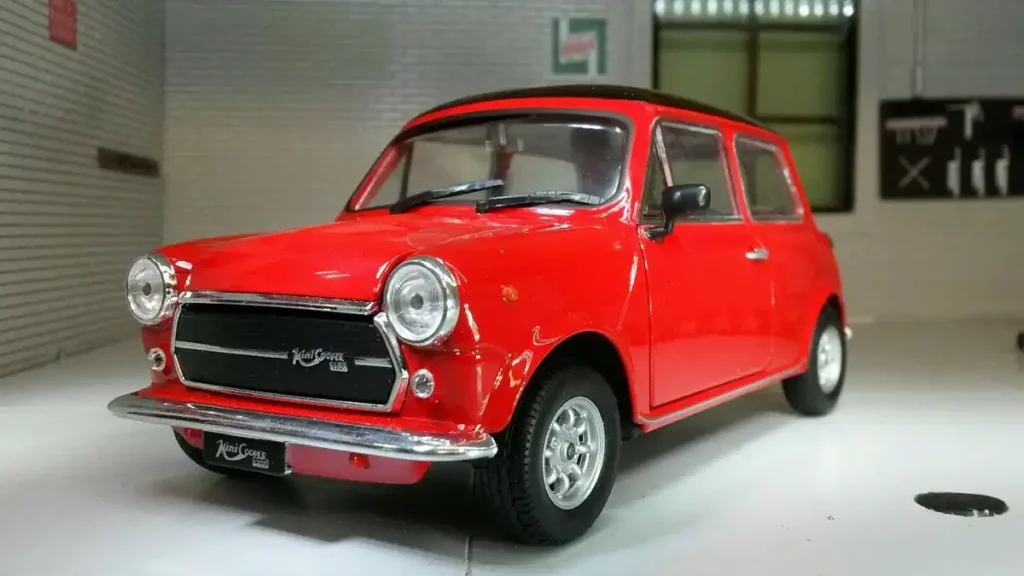
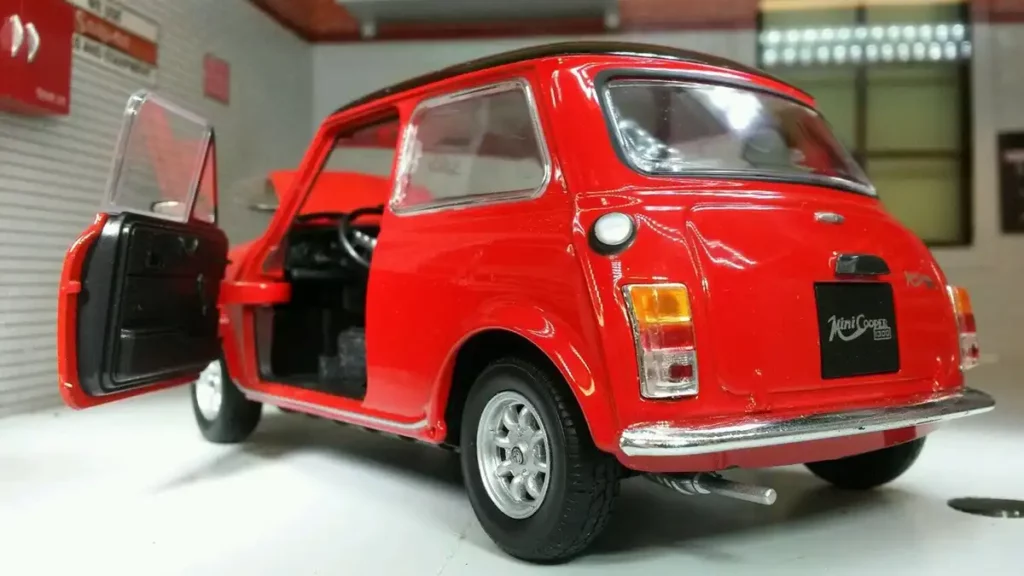


’64 Austin Mini Cooper – Matchbox
Initially released in 2009, 16 variations of the Mini Cooper have been released by Matchbox until 2022, including a version of the Mini Cooper with a sofa on the roof, reminiscent of Mr. Bean’s stunt in his movie. The photos below are of the 2022 model.
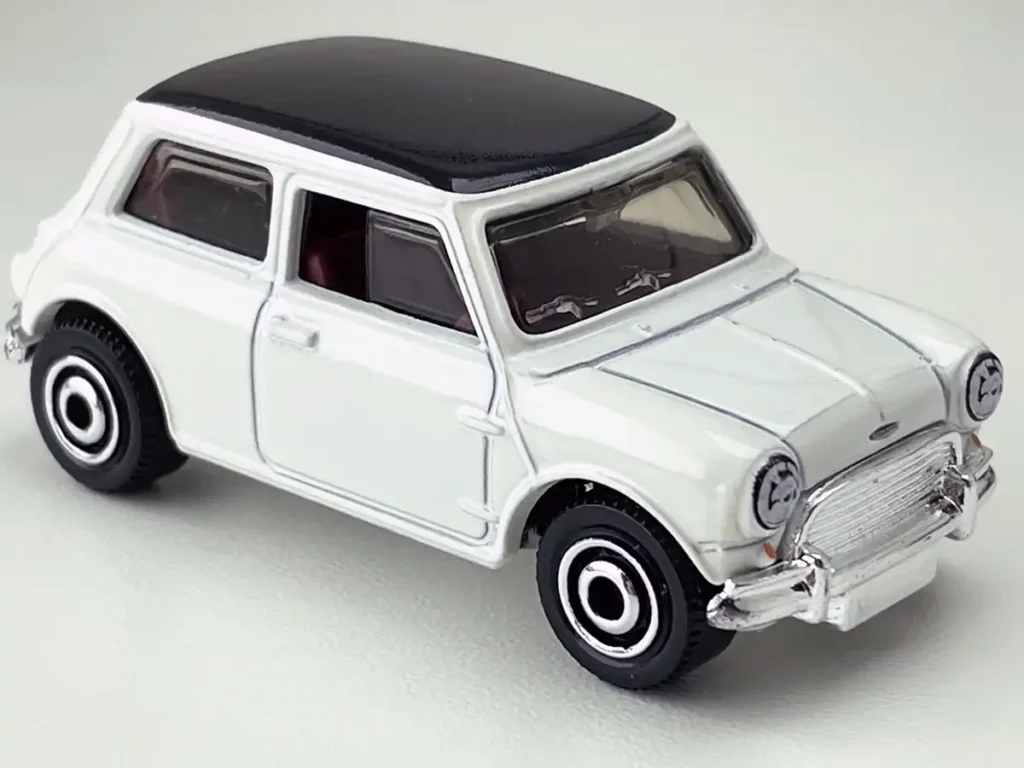
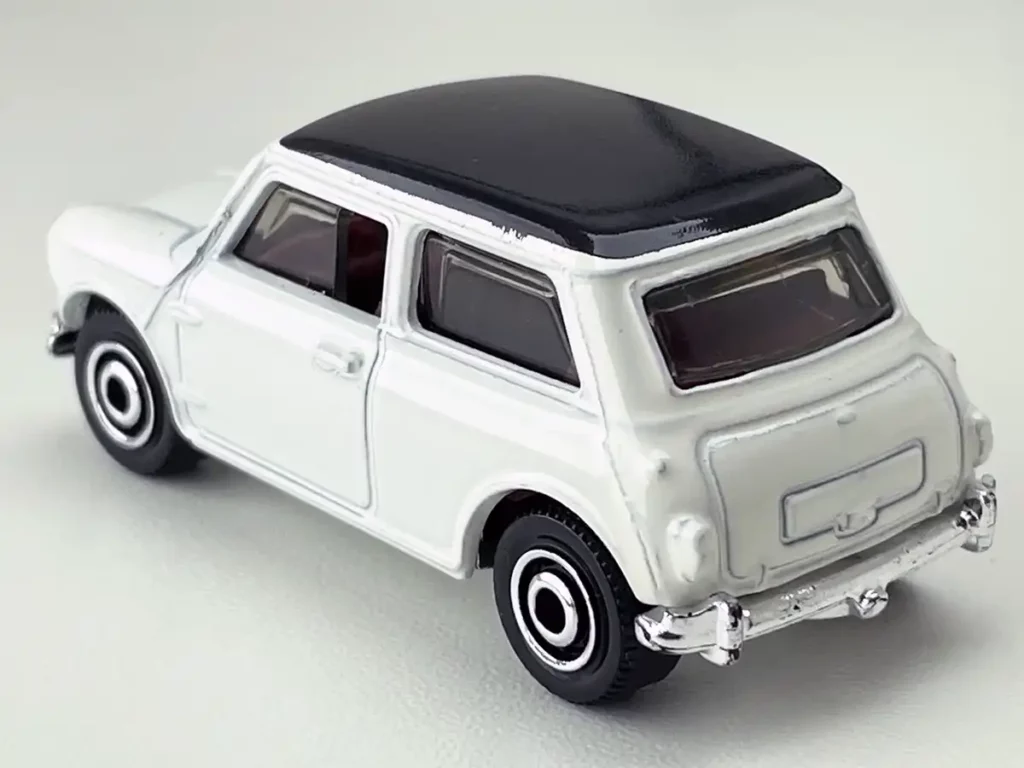
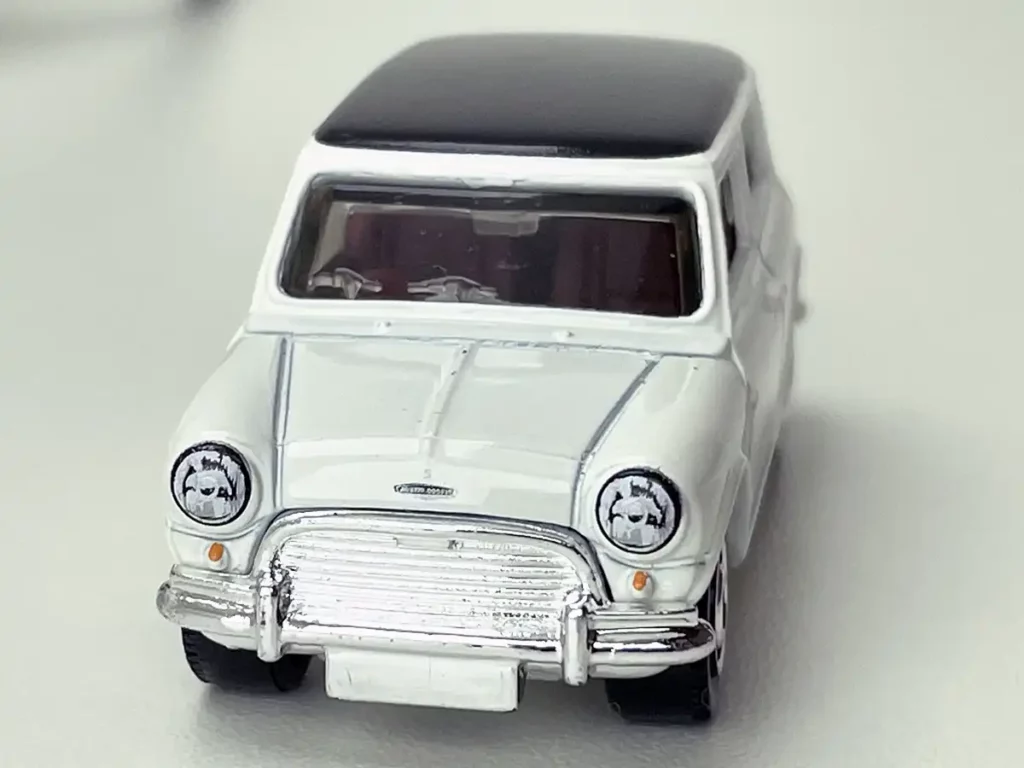
Bibliography
1. https://en.wikipedia.org/wiki/Monte_Carlo_Rally
2. https://www.motorsportmagazine.com/articles/rally/watch-monte-s-most-controversial-finish/
3. https://en.wikipedia.org/wiki/Mini
